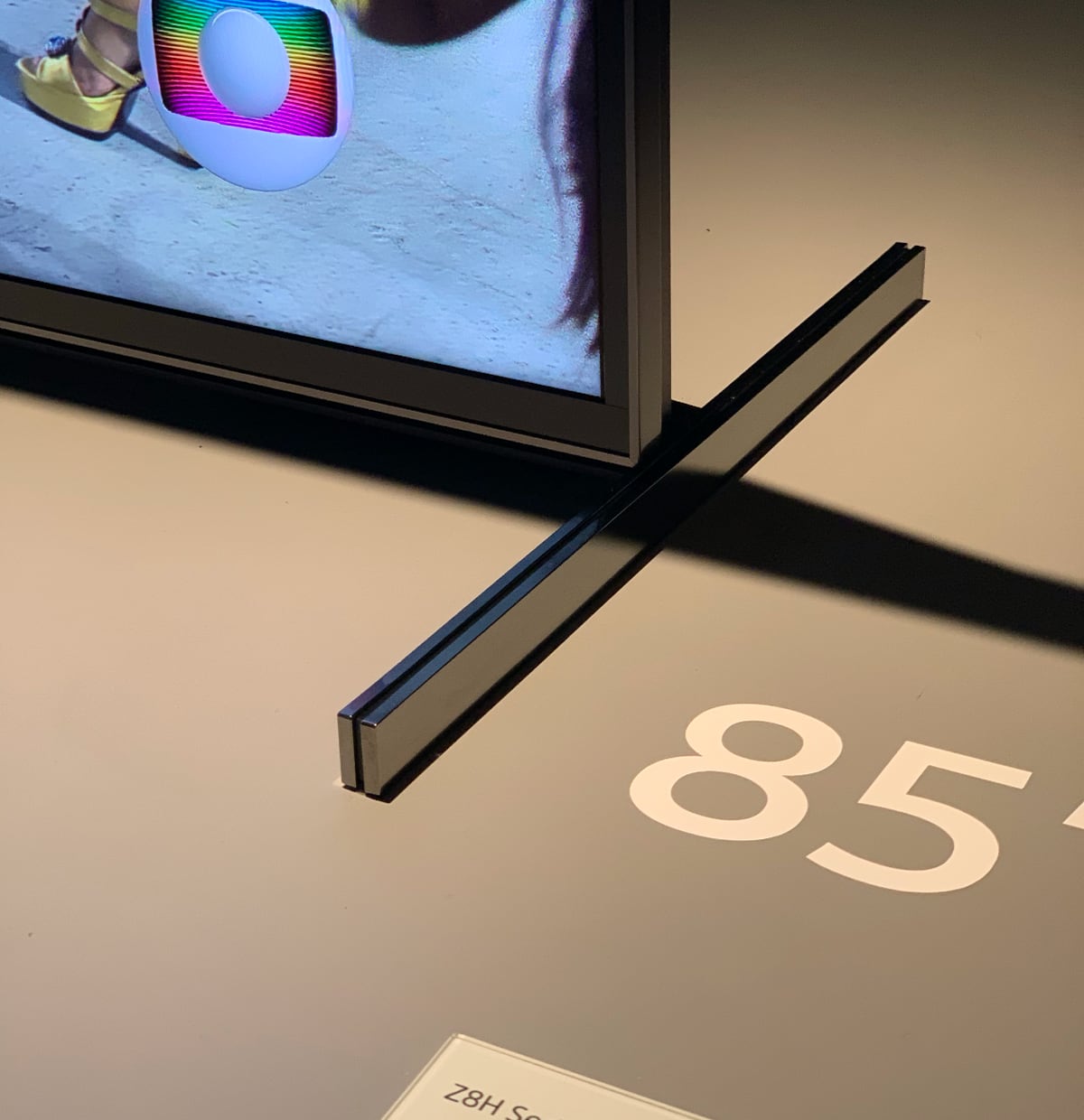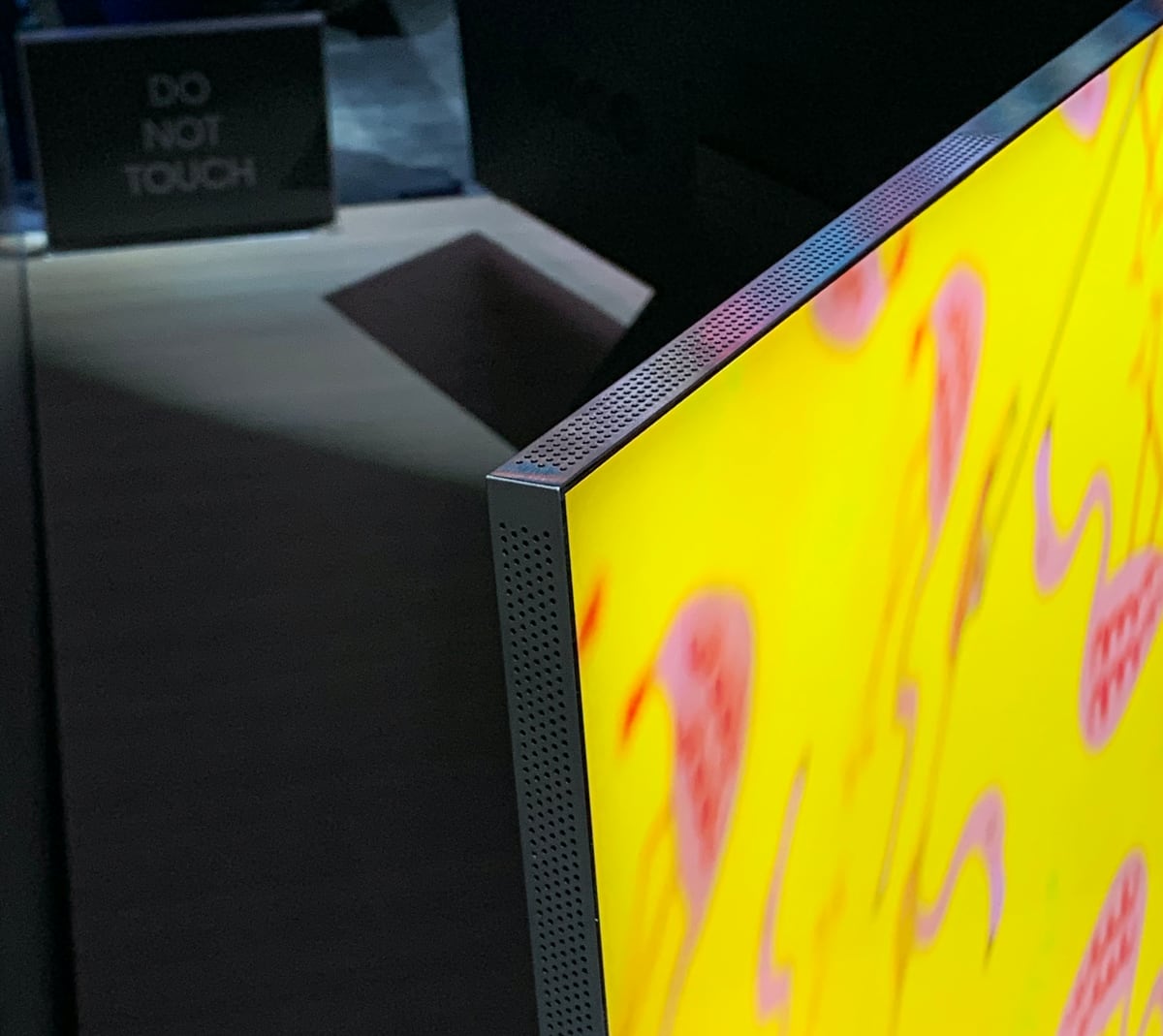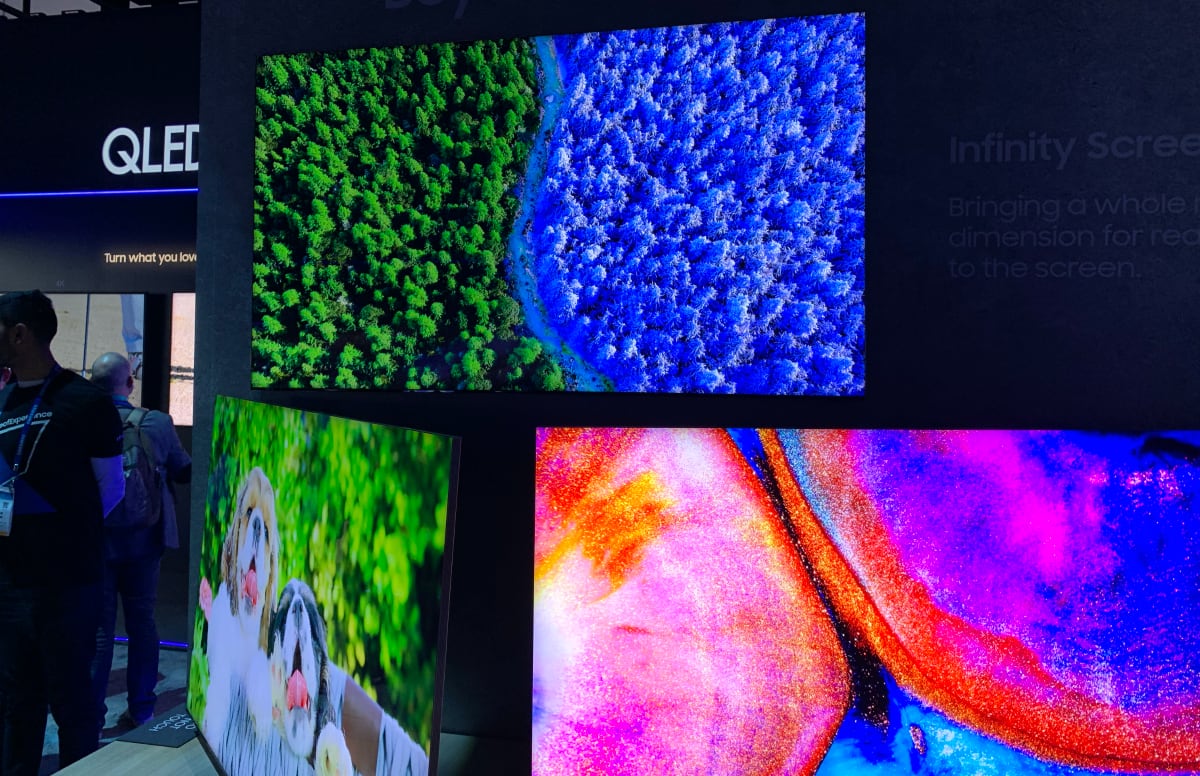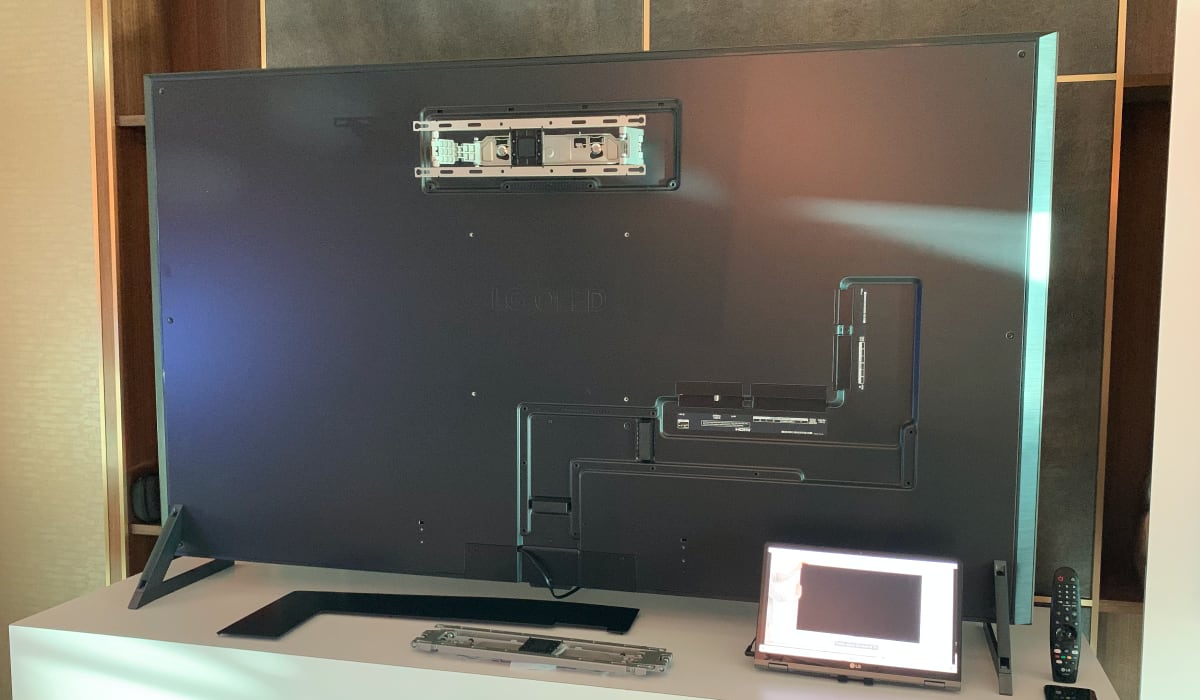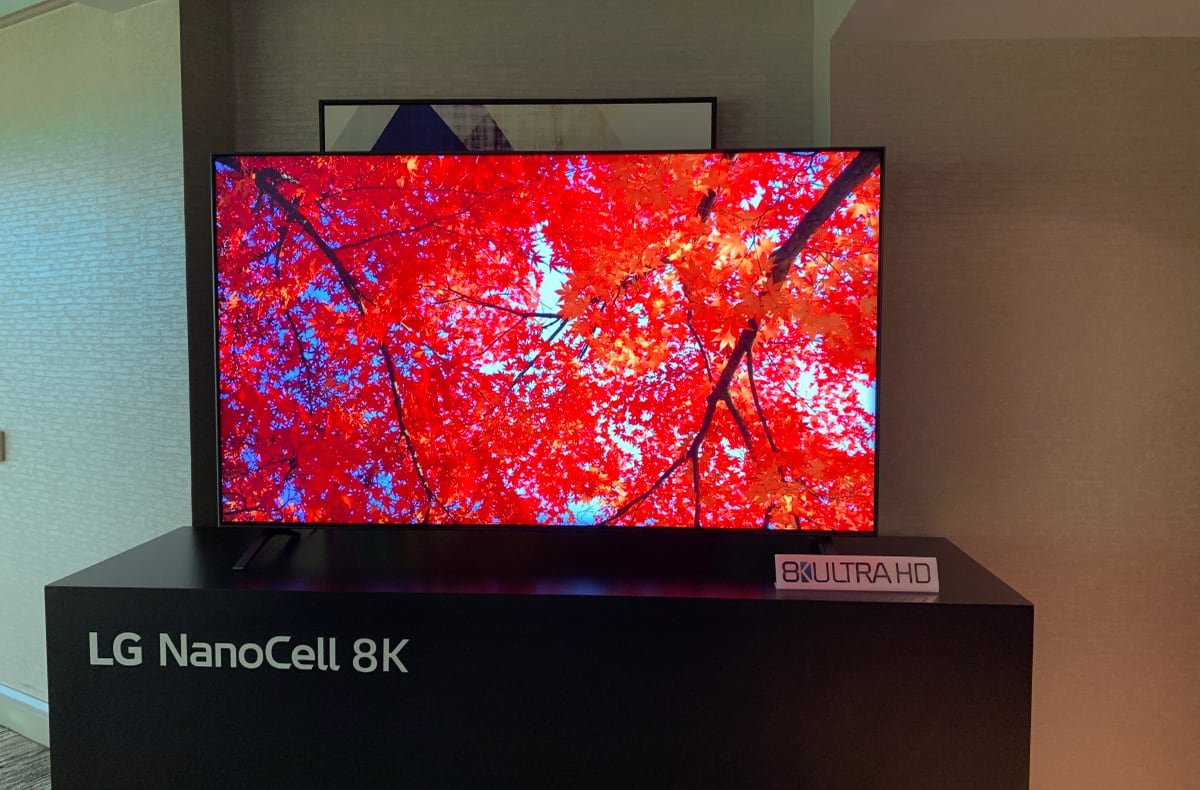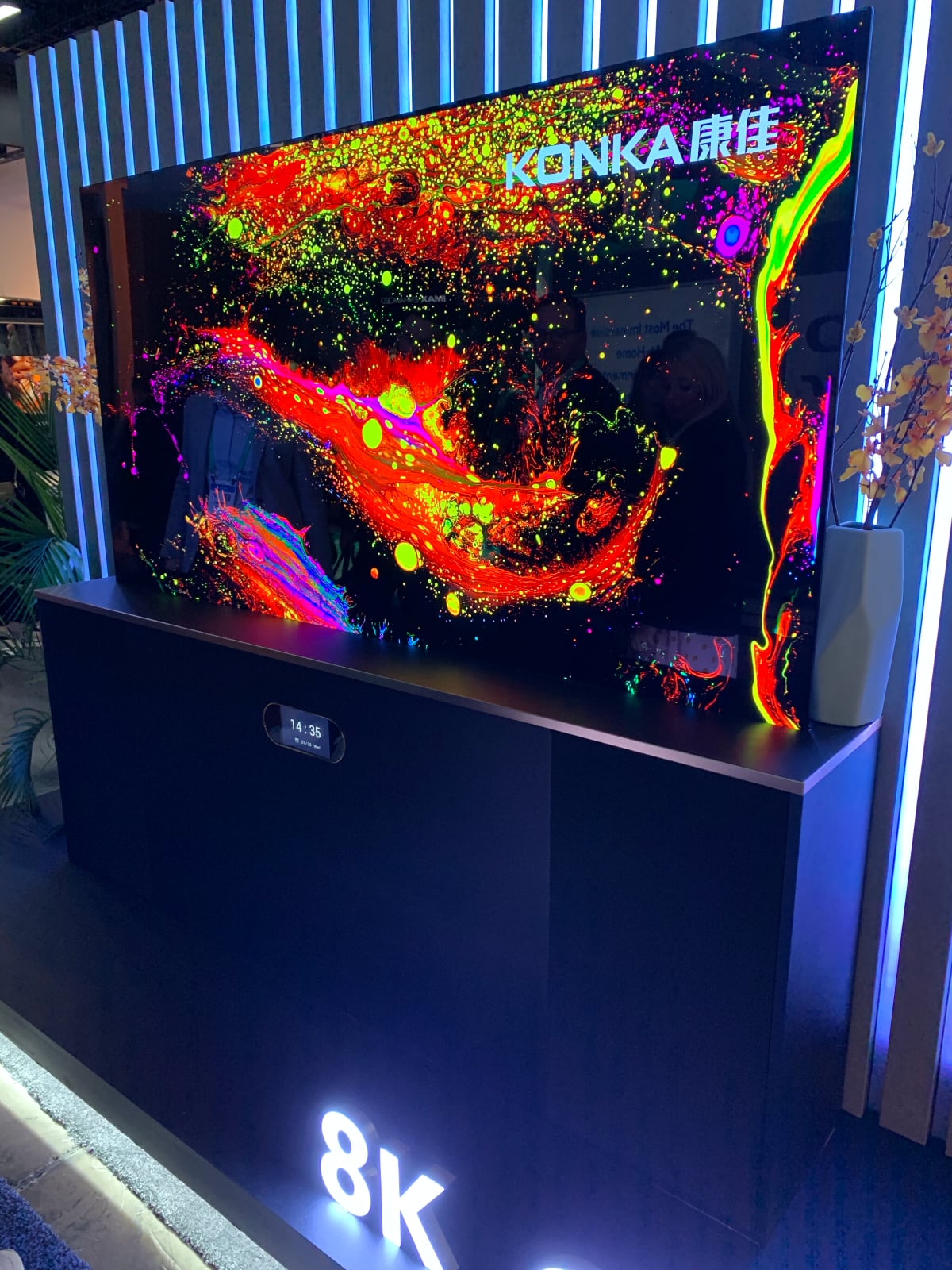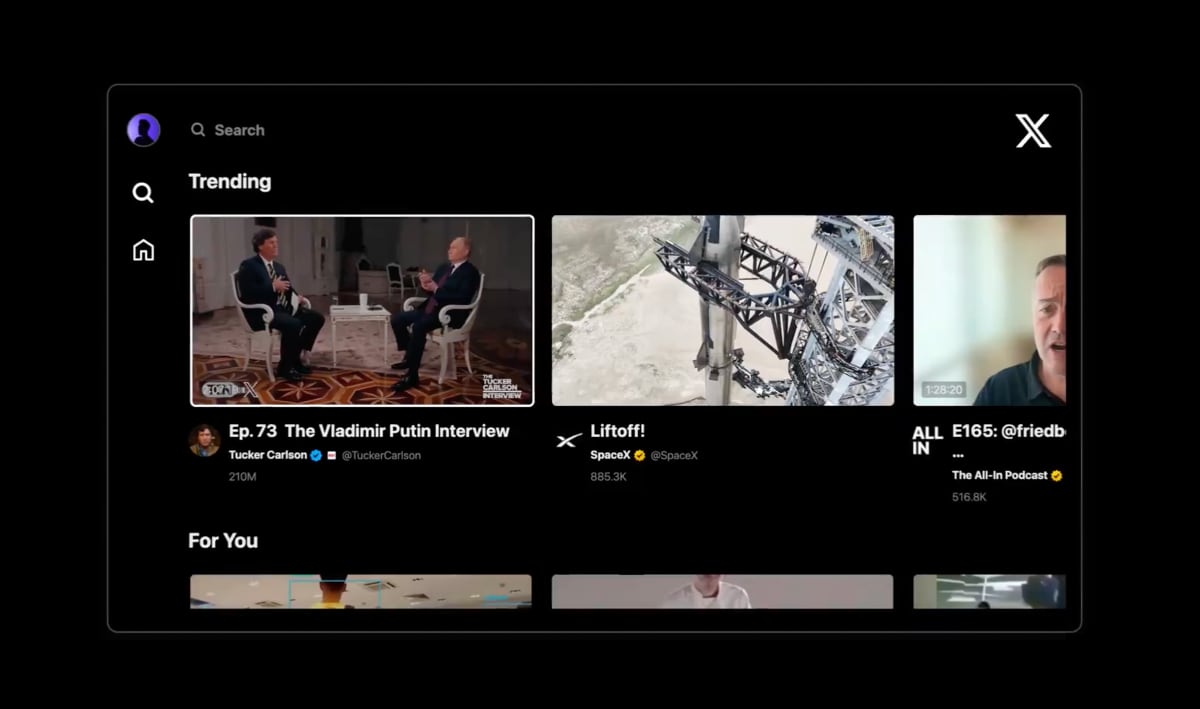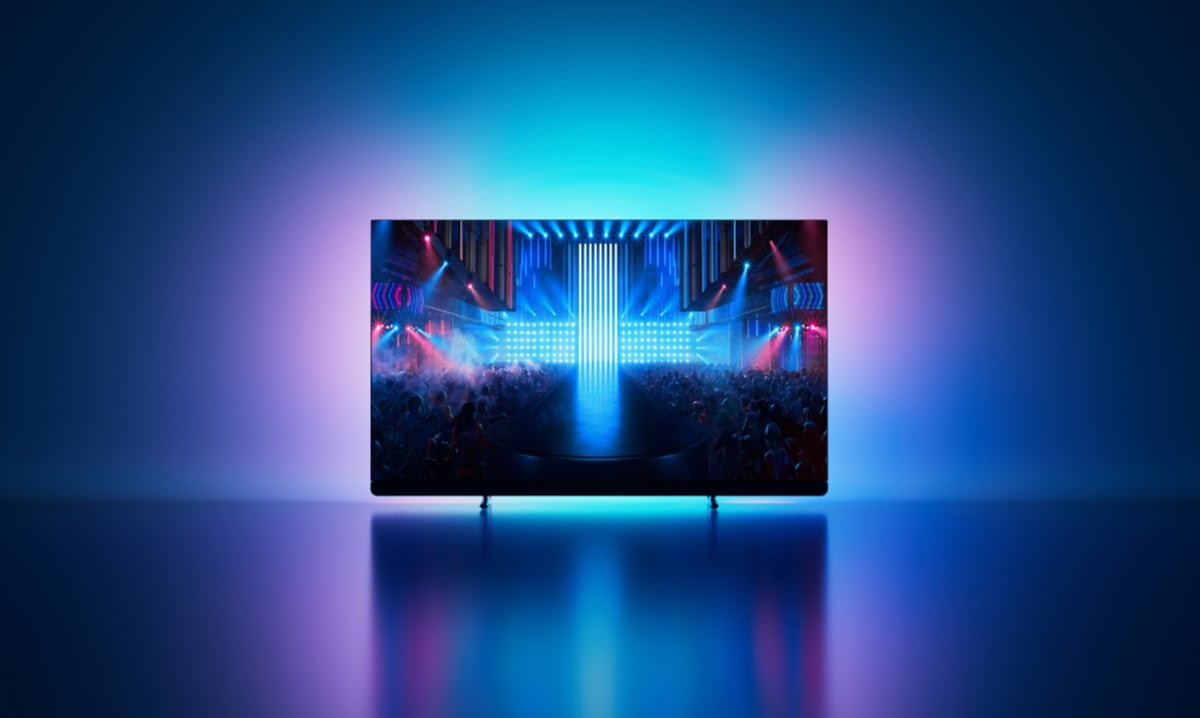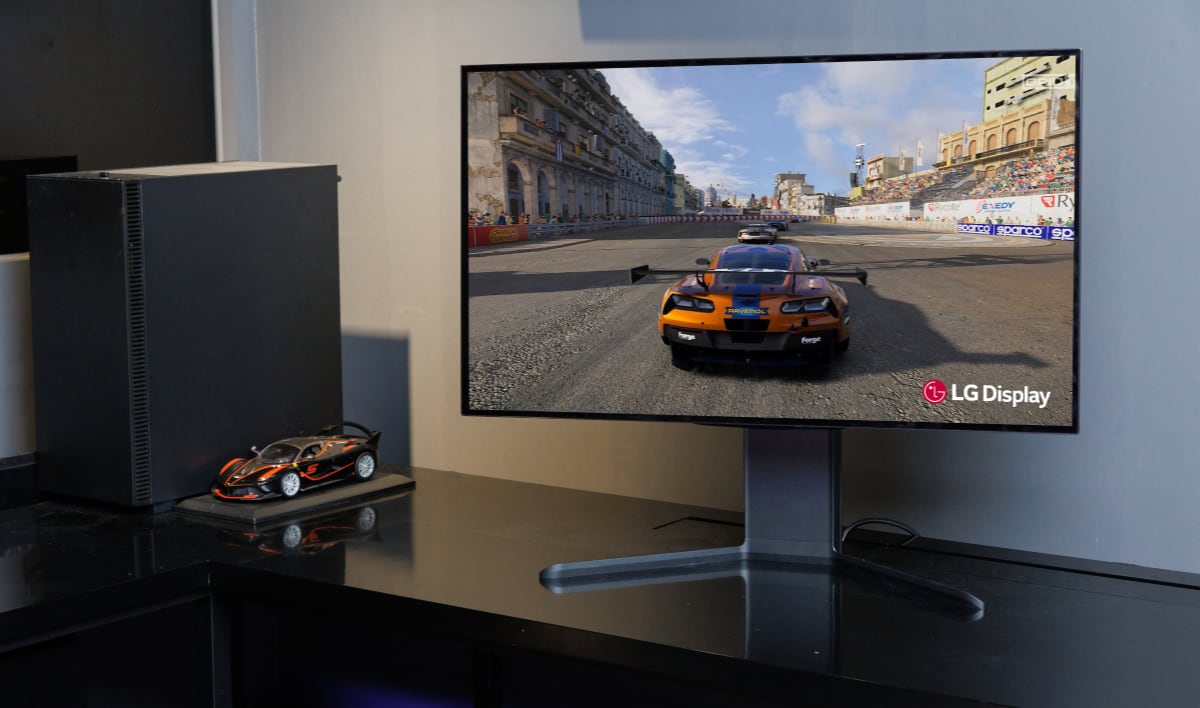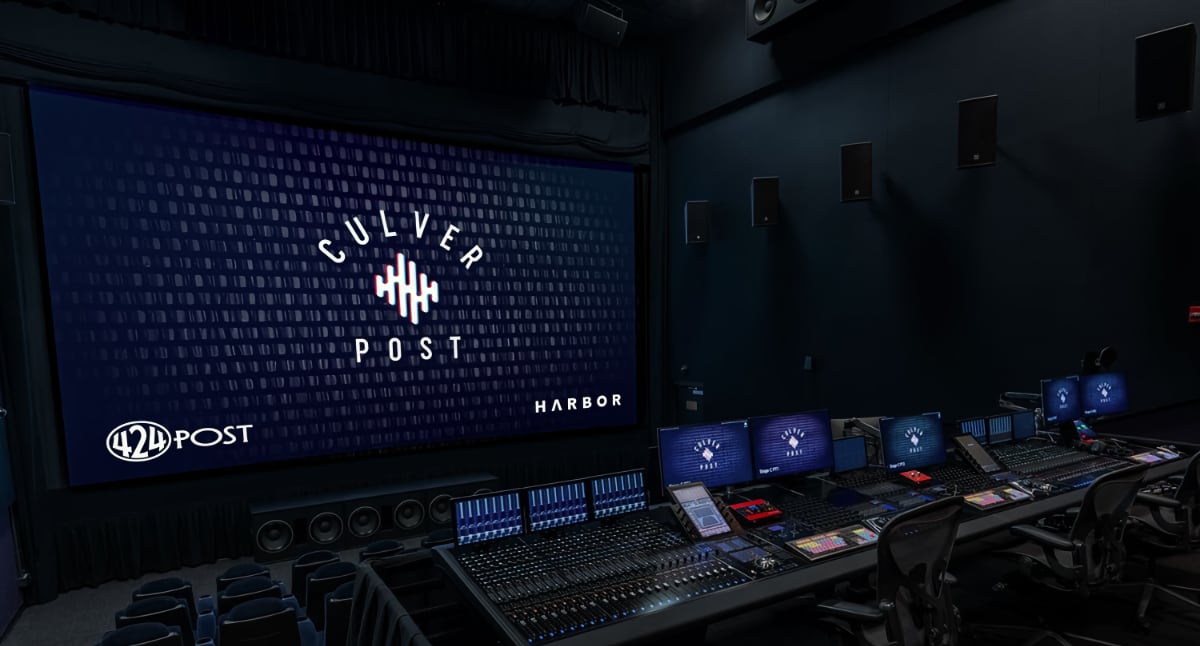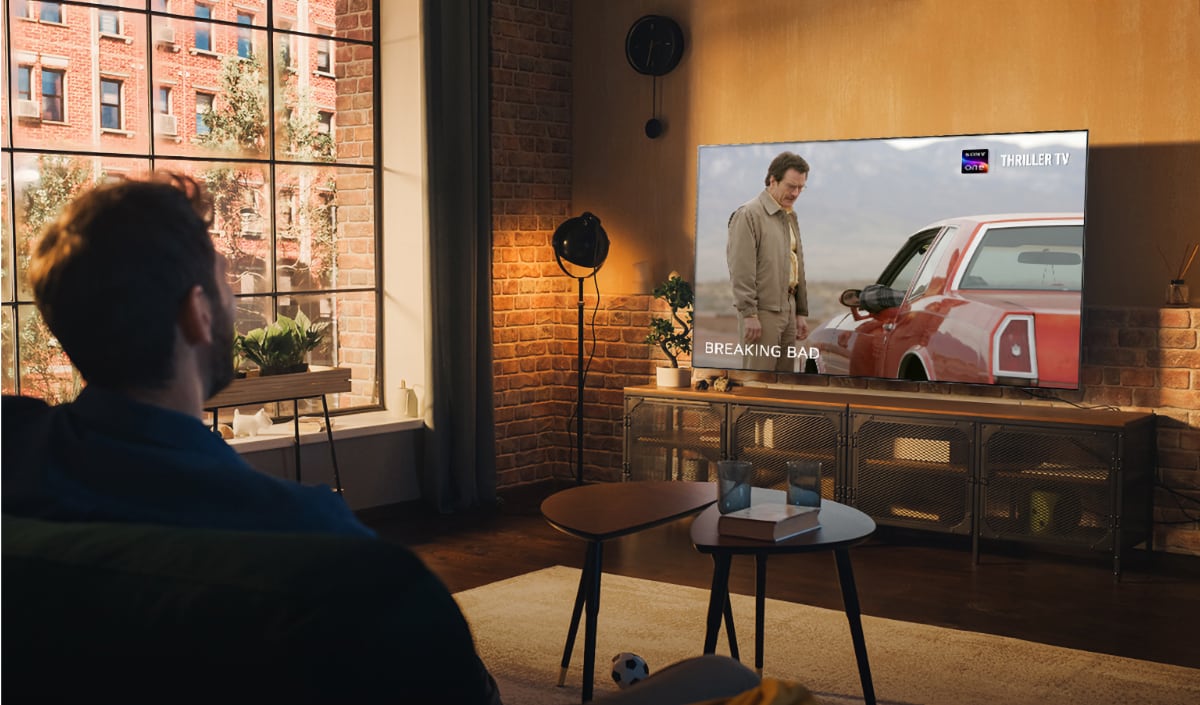CES 2020: Trends & first impressions of 2020 TVs
FlatpanelsHD has returned from Las Vegas and CES 2020, very tired but with lots of impressions. Here are the TV trends that shaped CES as well as our first impressions of 2020 TVs from Sony, Samsung, LG, and TCL.TV trends at CES 2020
This year's show was shaped by two TV market trends in addition to less defining developments in TV segments and technology. The two big trends were 8K and TV gaming. Starting with 8K, leading TV makers have either already launched 8K TVs or are preparing to enter the field in 2020. 2019 was a very slow year for 8K and at this time it is unclear if 2020 will be different. We are still awaiting pricing details on the new 8K TVs. Many critical questions surrounding 8K relate to content and distribution. One important factor is video compression. At CES 2020, the AV1 video codec made its official debut in TVs, which will enable 8K TVs to stream 8K content from YouTube. Other distributors such as Netflix have also committed to adopting AV1 (but not necessarily for 8K). Sony, Samsung, LG and TCL all said that AV1 will either be supported in their 8K TVs for the first half of 2020 or in the near future. As for Android TVs, Android 10 is required for YouTube 8K via AV1. Backstage, Samsung more than suggested that Rakuten TV will launch 8K streaming sometime this year, so that could be an exciting development.Turning our attention to TV gaming, HDMI 2.1 is the new buzzword. TV makers will gradually shift to HDMI 2.1, but LG remains furthest ahead after being the first to launch HDMI 2.1-equipped 4K TVs last year. Again this year, LG will support both VRR (variable refresh rate) and ALLM. Strangely, the manufacturer of PlayStation 5 - Sony - will offer HDMI 2.1 ports only in its Z8H (ZH8) 8K model and its X90H (XH90) 4K model, which has led to questions as well as speculation. Panasonic is not ready to transition to HDMI 2.1 yet and as such its HZ2000 flagship TV will launch without HDIM 2.1 ports (it will support eARC and ALLM).
Sony briefly highlighted PlayStation 5 specs
In terms of new features and technological developments, we saw Dolby introduce 'Dolby Vision IQ', which allows a TV to utilize built-in light sensors in combination with Dolby Vision's dynamic metadata to adapt the HDR picture, including the luminance curve, to match ambient light conditions in your viewing environment. This can potentially help reduce under/over exposure, especially for shadow details in the picture. Furthermore, the system lets the TV automatically change its picture mode based on content type. Dolby Vision IQ will, in 2020, be supported by Panasonic and LG. In addition, some manufacturers have developed their own adaptive systems for use with content that it not in Dolby Vision format. At IFA in September 2019, we saw the UHD Alliance introduce Filmmaker Mode, which is a kind of umbrella term. It involves that the TV switches to its most accurate picture mode, labeled 'FILMMAKER MODE' (in all caps), in which it deactivates most of its enhancement systems that could potentially affect the film director's creative intent. At CES 2020, manufacturers demonstrated how the system has been implemented and how, by utilizing metadata in the video stream, some TVs will be capable of automatically switching to Filmmaker Mode. Alternatively, a TV manufacturer can decide to make Filmmaker Mode available via a button on the remote control, meaning that it is manual switch. Below you see how LG has implemented automatic detection that prompts the user with a question whether he/she wants to use it going forward.
2020 TVs will increasingly try to adapt the picture to their surroundings
Also at CES, Samsung and Philips joined Panasonic, Vizio and LG in support for the Filmmaker Mode initiative. Sony said that it sees no immediate reason to support it since its 'Custom' Mode serves the same purpose. The counter argument to this would probably be that few viewers are aware of what 'Custom' mode entails so most viewers will not benefit from it. MicroLED was the new hot thing at CES in 2018. In 2019, more manufacturers had brought a microLED prototype to CES and this year most prominent manufacturers had at least one on display. Samsung still appears to be leading the pack and at this year's show it exhibited a crazy 292-inch 8K microLED display, which had been built by stacking four "normal" 146-inch 4K microLED models.
LG has automatic Filmmaker Mode
Sony, with its roots in the film industry, demonstrated how its 'Crystal LED' display (Sony's name for microLED) can be used as a substitute for a green screen in film production. For this demonstration, Sony had synchronised the microLED screen to a camera on a rail to create a parallax effect on the microLED screen. It was a massive screen and Sony has dubbed the system 'Atom View'. You can see the effect in the video below. Notice how the screen in the last few seconds of the video switches off one half to illustrate the real reflections in the car's paint. LG and Chinese brands also exhibited microLED, apparently mainly to demonstrate that they are in the game. LG does not seem particularly interested in developing consumer products based on the technology at this time. What was missing from CES? UHD Blu-ray players. Roaming the show flows, we did not spot a single UHD Blu-ray player and there were no new announcements of any sort related to the disc format. Of course, this does not mean that UHD Blu-ray is dead, but UHD Blu-ray players no longer capture the attention of the mainstream.
Samsung's enormous 292" microLED TV
Sony in 2020
Sony was once again highlighting its commitment to reference picture quality. The Japanese brand introduced a new A8 4K OLED model, which has improved picture and audio (including a new subwoofer). The lack of HDMI 2.1, however, was the biggest talking point and it could indicate that Sony is planning to introduce additional models in the second half of the year to coincide with the launch of PlayStation 5 in late 2020. Sony also introduced its first 48-inch OLED TV in the form of the A9 model. It is an exciting step for OLED, especially for console gaming. But again, the lack of HDMI 2.1 makes it less appealing to gamers than it would otherwise have been. Also read: Sony announces 48" A9 OLED TV, new 55-65" A8 OLED TVs for 2020With its 2020 OLED TVs, Sony will introduce X-Motion Clarity, which is made possible by LG Display's upgrade to a functional BFI system (Black Frame Insertion). The system will continuously "scan" the OLED display, meaning that a dark bar will roll (at 120Hz) from the top to the bottom - rather than using fullscreen black frames. The intended purpose here is to cancel the human eye's inherent memory effect that is a primary source for the perception of motion blur on LCD and OLED TVs (with sample-and-hold driving). By using these scanning effects to constantly "reset the eye", moving images will appear sharper. The scanning effect of the new BFI implementation is also faster than most eyes can perceive so we avoid negative effects such as flickering or reduction in brightness. FlatpanelsHD broke the news about the 120Hz BFI system in OLED TVs in early 2019 and it was intended to be included in the 2019 models but was pulled in the eleventh hour. It will now make its debut in 2020 OLED TVs and we look forward to testing it as soon as we get our hands on review samples. Also read: Sony unveils 2020 line-up of 8K & 4K Full Array LCD TVs Sony also introduced a new range of 8K TVs called Z8H / ZH8. However, Sony did not put as much emphasis on 8K TVs as some of its competitors and during the session it focused more on the new speaker system in Z8H than picture quality. The TV has a redesigned bottom speaker as well as new side speakers that allow Sony to use the TV frame as a speaker membrane - much like 'Acoustic Surface' that uses the OLED panel to produce sound. The result was convincing in the A/B comparisons that Sony had prepared for its demonstration. As for picture quality, Sony compared Z8H to LCD TVs from competing brands to highlights how it achieves more accurate peak brightness in small glowing objects while at the same time suppressing blooming (halos). This is not a new thing for 2020 but Sony apparently thought that the subject was worth revisiting. So not much to report about Sony 8K TVs at this time. Sony was not exhibiting its other TV models but we got a sneak peek during a backroom session. Besides some smaller tweaks to design, the main development is that X900H / XH90 (which will replace X850G / XG85) now features LED zone dimming, while X950H / ZH95 (that will replace X950G / XG95) features X-Wide Angle technology - to expand the viewing angle - in more sizes. A new feature from Sony this year is room calibration for TV audio via the microphone in the remote control. The company has also upgraded its premium remote control with backlit buttons that will automatically illuminate when picked up - if your viewing environment is dark.
2020 Sony TVs seen from the back
New Sony TV remote with backlit buttons
Samsung in 2020
At CES 2020, Samsung was fully focused on 8K TVs and how its new 'Quantum' video processor is taking advantage of upscaling and a new algorithm for video compression (AI Scalenet) to enhance 8K picture quality. With its AI Scalenet, Samsung claims to be able to deliver 8K video on 4K bandwidth, 4K video on HD bandwidth etc. The company emphasized how its neutrale network is now better optimized for local learning rather than relying on a central database at Samsung. Also read: Samsung unveils Q950TS TV with thin 'infinity design', 8K, AV1 Samsung used its new Q950TS 8K TV to demonstrate its latest upscaling algorithm side-by-side with last year's Samsung Q950R 8K TV that will be discontinued. In some scenes, one could spot a clear difference while it was less discernible in other scenes. However, we need to evaluate this in a controlled environment before we can say anything definitive and it should be noted that the aggressive picture enhancements are typically applied to the dynamic picture modes only - as we also pointed out in our reviews of Samsung Q90R and Q900R. During the sessions, Samsung also emphasized how close its Movie picture mode it to the reference but whether this means that the luminance curve (EOTF) now tracks closer to the reference remains to be seen. We will take a closer look once we receive a review sample. Samsung is putting a lot of efforts into gaming features. The company said that input lag should now be less than 10 ms for all resolutions (9,2 ms was measured on 1080p60). In terms of audio, Samsung has developed an 'object tracking' feature that uses to top speakers in TVs with Object Tracking Sound (OTS) plus two side-mounted units in Object Tracking Sound+ (OTS+). The system aims to position sound more 2-dimensionally across the screen to create a sense of height perspective (top/bottom). The top-fitted units can also be used in combination with Samsung's new soundbars carrying the 'Q Symphony' logo. The speaker system can expand to sound stage but it should be noted that the TV's height channels are not compatible with Dolby Atmos. Samsung's Tizen operating system includes a couple of new features, including a Picture-in-Picture function for smartphone mirroring to let you pull up a game walkthrough on YouTube or something else. Tizen now also supports two audio outputs, meaning that you can connect a pair of headphones via bluetooth and listen to audio from the PiP windoe while the TV outputs audio from the main picture. Lastly, users will in 2020 be able to select between three integrated voice assistants; Google Assistant, Amazon Alexa and Samsung Bixby. Last year, the former two were supported only via external devices. All three are still missing support for most languages and may therefore be limited in your region. The Wall - Samsung's microLED concept - has been shrunk to 75 inches but although pricing has yet to be announced, we expect it to still be wildly expensive. Samsung's 146-inch is priced at the equivalent of 345,000 US dollars in South Korea so not exactly close to being "home-ready". At the show, Samsung had installed a mind-blowing 292-inch microLED version and we noticed that the seams between the modules are no longer visible. The first generation model from 2018 had visible seams from a distance (people were not allowed to examine it from a short distance) so either Samsung has fine-tuned its modules or managed to reduce the frame further. The result was impressive but we are still not optimistic about microLED's near-term viability. It will take some time. Also read: Samsung is announcing microLED TVs for a third time at CES 2020 Samsung did not showcase any of its 4K Q series TVs for 2020 on the show floors but it did highlight some of its design TVs; new sizes of the Frame as well as the new rotating Sero. The Sero is a kind of fashion TV that is equipped with a motor to rotate the screen from horizontal to vertical orientation. It is aimed at a new generation of viewers who still haven't found out that their smartphone can film in horizontal orientation (ok ok, many are probably doing it on purpose) and if you own a Samsung smartphone, the screen can automatically follow the orientation of your smartphone.For users without a Samsung smartphone, the remote is equipped with a button. The stand hides a sound system that can also be used for music playback. It makes The Sero a more complete package than some of the similar screens that we spotted from Chinese brands at CES. It will be interesting to observe if there is a market for these kind of TVs.
Samsung The Sero can rotate 90 degrees
LG in 2020
LG continues to focus mainly on its OLED TVs and for CES 2020 it had built a huge curvy OLED screen to greet visitors at the entrance after which visitors would encounter a wall of rollable RX screens that were installed at floor and ceiling level (RX turned upside down). There is no doubt what LG considers the future of displays. There are two newsworthy additions to LG's TV line-up. The CX series will be available in 48 inches and the GX series will be reintroduced as a flat 'Gallery' TV. All of LG's high-end TVs will be equipped with HDMI 2.1 including support for various VRR schemes (G-Sync, VRR, FreeSync) and now also an upgraded 120Hz BFI system that utilizes a scanning method, as explained in the Sony section above. Here is a slow-motion video to give you an idea of how it works.Input lag has been reduced further and should hit around 5 ms, which is not as low as dedicated gaming monitors but still very impressive and there is no doubt which audience LG is trying to cater to with its new 48-inch OLED TV. During its presentation, the 48-inch model was connected to a gaming PC and a game console with variable refresh rate. LG TVs are ready for when the next-generation PlayStation and Xbox consoles arrive. Another bonus feature this year is support for 4K 120Hz via HDMI 2.0 - although with limitations compared to HDMI 2.1.
LG 48" 4K OLED TV connected to a gaming PC
The GX model was not part of the line-up last year and has changed form in the meantime. It has traded its smartphone thinness for a deeper 2 cm profile, which on the other hand is uniform and houses all electronic components required to power the screen. There is a wall bracket solution integrated and included in the box. The wall bracket can be extended from the wall to give users access to input/output ports. All cables must be connected to the back of the TV. There is no external connection box like the W series ('wallpaper') or Samsung's high-end Q models but for those users who have complained about the "false" thinness of OLED TVs with a large electronics box attached, GX presents a new approach to OLED TV design. LG also launched a soundbar designed specifically for GX. The soundbar has the same thickness and is covered in a fabric. Based on a short demonstration, it is a considerable upgrade over standard TV speakers. Also read: LG 2020 4K OLED TVs with G-Sync, 48" size, Filmmaker Mode - BX, CX, GX, WX LG's 8K OLED range (ZX), which is still extremely expensive, was also exhibited. The company used the opportunity to highlight that it meets CTA's '8K Ultra HD' specification, making it a "real 8K TV" as opposed to arch rival Samsung's 8K TVs that use subpixel rendering, which reduces effective resolution. Unfortunately, the company glossed over the fact there is still a dearth of 8K content. The TVs will, for the first time, be equipped with AV1 hardware decoding for YouTube 8K streaming but other than that there is no 8K content to be found. LG also exhibited its 8K LCD TVs but since these are not exactly the highlights in its line-up, so it quickly moved on to the 8K and 4K OLED models. In the suite, LG also demonstrated its latest advancements in 'AI' saying that its TVs can now automatically change sound or picture mode to match the type of content. However, other than Filmmaker Mode, this kind of picture/audio behavior is not something we usually endorse. It also highlighted voice control and explained that several models now have a built-in microphone (it can be deactivated) for Amazon Alexa, Google Assistant and its own voice features.
New Gallery GX OLED from LG (and LG's Home Dashboard)
TCL in 2020
TCL had a press conference and a short tour but no "behind the scenes" sessions so the prototypes were instead showcased on the show floors. TCL often showcases new technologies that end up in products further down the road so it is an interesting peek into its roadmap. In 2020, TCL will launch its first 8K TVs - Roku TV in the US and Android TV in Europe. The company says that it will introduce AV1 hardware decoding to make its TVs capable of YouTube 8K streaming but Android 10 is required before it can happen. Through a firmware update, TCL will enable VRR (variable refresh rate) on select 2019 TVs in the US and also partner with THX to introduce 'THX Game Mode'. In Europe, VRR support remains "undecided" so we will have to revisit the subject closer to launch. The company did confirm, however, that it will use a new chipset for its European Android TVs this year. Also read: TCL will enable VRR on select 2019 TVs, launch first 8K TV in 2020 TCL's roadmap includes more advanced miniLED LCD TVs with more dimming zones (and an active dimming matrix) as well as the super slim prototype seen below. However, challenges remain as the prototype had a very visible backlight matrix structure resulting in a dark grid pattern across the screen. The thinness of the display on the other hand matches OLED, which is an impressive achievement with an LCD TV.
TCL next-gen prototype of miniLED LCD
There were tons of other TVs from other manufacturers at CES but it is impossible to cover everything in less than a week. Philips (TP Vision) will unveil its 2020 TV line-up for Europe next week and Panasonic will reveal its line-up in mid-February. More information on Samsung, Sony, LG, TCL, and the other manufacturers' TV line-ups for 2020 will be announced over the coming weeks and months. You can find more picture from CES 2020 in this forum thread.
TCL next-gen prototype of miniLED LCD


